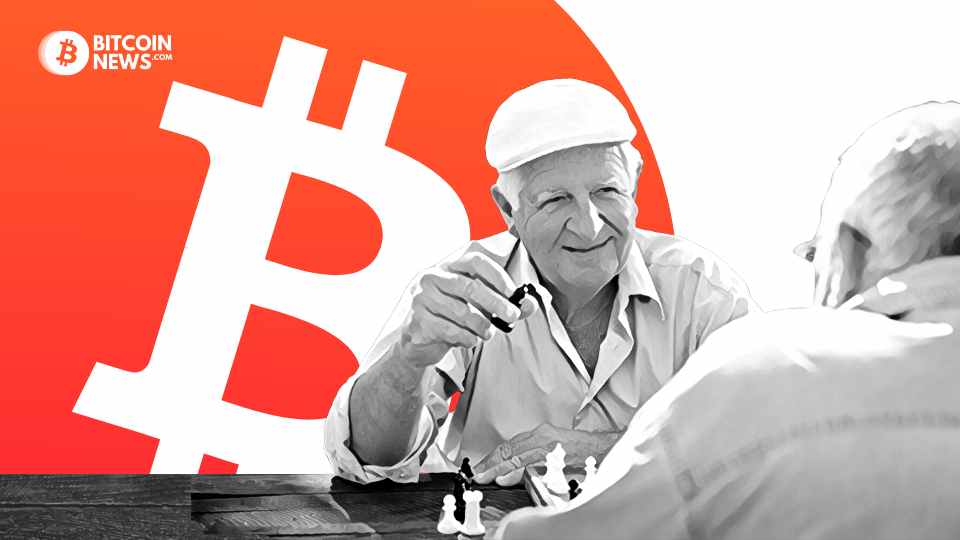This article was originally published by James Corbett on corbettreport.com
It’s a ridiculous, no good, stupid, rotten meme.
You know the idea that every horrible move that Precedent Trump ever made (like appointing John Bolton or launching Operation Warp Speed) was actually some super complicated three-dimensional chess move intended to accomplish the exact opposite of what he was actually doing? (“You don’t understand, man! He’s appointing Gina “CIA Torture” Haspel because he wants to expose her role in CIA torture!”)
Yeah, that meme.
Well, as much as “Trump the 3D chess master” represented the apotheosis of Hopium for the Trump Train crowd (cf. The Babylon Bee‘s spot-on satirical headline from January 20, 2021: “Republican Starting To Think Trump Might Not Pull Off A Last-Minute 4D Chess Move“), the idea of three-dimensional chess itself is not without merit. After all, I employed it in 2013 to discuss the reality of “China and the New World Order” and used it again in 2014 to discuss the true nature of the Global Chessboard. (Don’t blame me for launching the meme, though! The earliest reference I could find was a 2010 clip of Cenk Uyghur discussing liberal defenses of Barack Obama.)
So in defense of this much-abused idea, allow me to present to you a beginner’s guide outlining How To Play 3D Chess.
2D Chess vs. 3D Chess
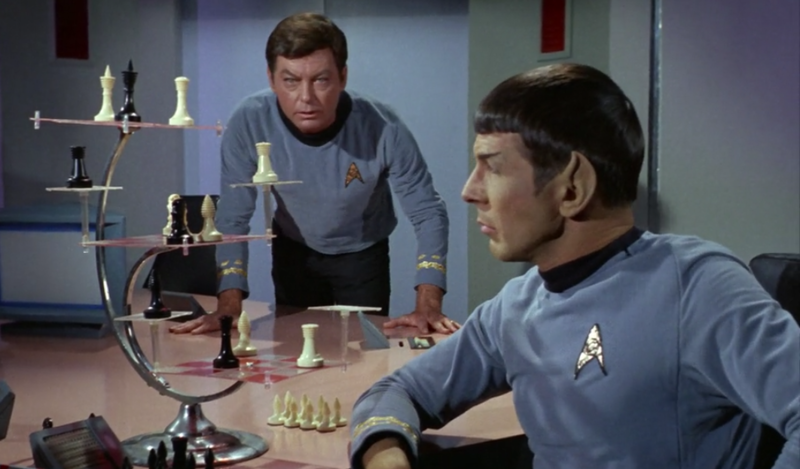
We all know how to play regular old, run-of-the-mill 2D chess, right? Well, if not, here’s your crash course.
Long story short: Each player controls a set of sixteen pieces, one white and one black. Each piece can move in certain, proscribed ways around the chessboard—64 squares laid out in an 8×8 grid—and can capture the other side’s pieces by moving to a square that is occupied by an opponent. The goal is to “checkmate” the king of the opposite side by forcing him into a situation where he is unable to move without being captured.
Sadly for any chess aficionados in the crowd, though, we are not here today to talk about the game of chess. We are here to talk about chess as it is often employed by the globalist jet set: as a metaphor for geopolitical struggle. After all, just as in chess, the Machiavellian strategists of the global order like to imagine themselves moving pawns around the global chessboard in order to gain control of this or that square and, eventually, to checkmate their opponents.
That chess is just a metaphor for geopolitics and that chess strategy bears more than a passing resemblance to geopolitical strategy is, after all, the central conceit of Zbigniew Brzezinski’s 1997 work, The Grand Chessboard. In that book, Brzezinski writes at length about the “oddly shaped Eurasian chessboard” and the moves that the American empire should be making on that board to insure their continuing global hegemony. Thus, Russia, for instance “remains a player” in the game for Eurasia “even though it has lost some of its ‘pieces,’ as well as some key spaces on the Eurasian chessboard.”
The chess analogy becomes even more apparent in times of war. Think of the military planners huddled around a battlefield map like a chess master huddled around the board, observing the pieces in play and deciding where to deploy their forces next. Even in the current war against the “invisible enemy” of coronavirus, one gets the sense that Bill Gates believes himself to be a chess master, moving the pawns around his global chessboard to “prevent the next pandemic” as shown in one of his recent creepy videos.
But this is 2D chess. Now let’s consider 3D chess.
Although many will think of three-dimensional chess as a fictional game concocted by the Star Trek writers, 3D variants of the classic chessboard have existed since Lionel Kieseritzky developed his 8x8x8 cubic chess board in 1851. Different 3D chess variants have been developed in the intervening century and a half, but they generally involve the introduction of playing surfaces “above” the regular, two-dimensional chessboard, and extend the rules of movement for each piece into the third dimension so they can “jump” up and “fall” down to the other boards.
So if 2D chess has obvious utility as a metaphor for geopolitics, how about 3D chess? Can we learn something about how the geopolitical world really functions by looking at it from a 3D perspective?
2D Politics vs. 3D Politics
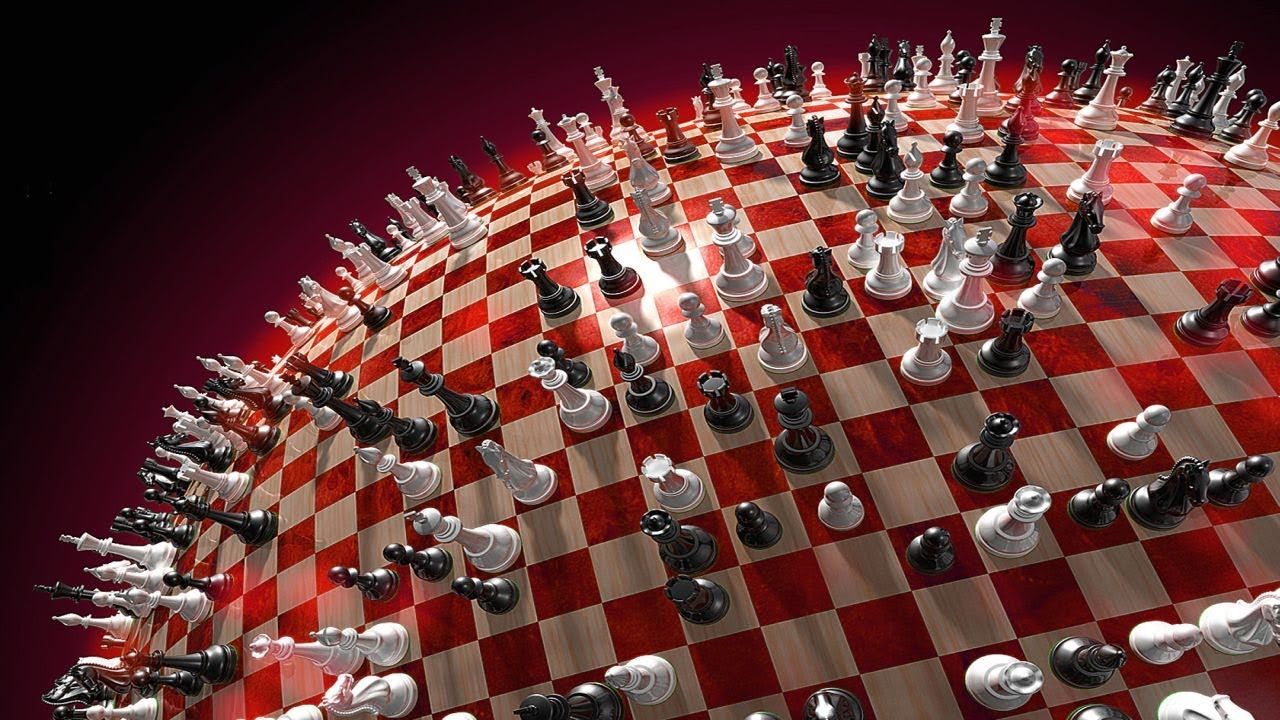
Geopolitics is like chess. The world (mis)leaders are the players, moving their pieces (people, resources, military forces) around the board (the world) in order to checkmate their opponent (their geopolitical foe).
So far, so straightforward. But here’s where things get tricky.
What if a player thought they were playing two-dimensional chess when in fact they were playing three-dimensional chess? If for some reason they could only see the 2D chessboard, you can imagine how shocked they would be to see pieces dropping onto the board seemingly out of nowhere and taking control of squares. Where did that piece come from? Who’s controlling it? Why did it appear there? What is its mission? . . . And is it just me, or is that a white piece that’s been painted black?
To say that this would be confusing for the 2D player is an understatement. It would, in fact, mean that some moves and events that happen in the game would be completely incomprehensible to those solely focused on the 2D match.
Now what if this were the correct way to envision geopolitics? Not as a regular 2D match between nation-state opponents, but as a 3D game where nation-states compete on the regular board while shadowy forces command extra pieces that appear from some unseen board and work toward goals that are not immediately apparent?
Does that sound far-fetched? Well, until just a few years ago the term “deep state” was itself considered to be an outlandish conspiracy theory, something so ridiculous that it was not to be countenanced at all in polite, mainstream conversation (the occasional Bill Moyers documentary notwithstanding). But since the mainstreaming of the shadow government began in earnest several years ago, the term “deep state” has entered into the popular lexicon. Even the term “deep state” belies an understanding of the extra-dimensionality of this political entity. It is not operating on the regular plane of politics, but somewhere “deeper,” below the surface of what we can see.
With the 3D chess metaphor at our disposal, then, we are better situated to understand some of the moves that the deep state is making on the “grand chessboard.”
Take the Cold War. From the 2D perspective, the narrative is straightforward enough: the USA controlled the white pieces, the Soviets controlled the black pieces, and these two well-matched opponents fought over the grand chessboard for decades—mostly in Afghanistan, Vietnam and other “peripheral” areas of the board—before the game became too expensive and the Soviet team resigned.
But this perspective comes up short in describing the actual events of the 20th century. Why did the west prop up the Soviets with technology transfers, not just in the early stages of the Bolshevik Revolution but right through into the heart of the Cold War? Why did the American government build up the Soviet threat, including aiding them in the development of nuclear weapons, through the lend-lease program? Why did American corporations provide the means for the creation of the Soviet war machine? Weren’t they mortal enemies?
But what seems baffling from a two-dimensional perspective—where “Team USA” is facing off against “Team Soviet” for control of the grand chessboard—becomes almost embarrassingly simple if we simply take account of the third dimension of the game. In the case of the Cold War, that third dimension was occupied by a clique of wealthy oligarchs who wielded their wealth and power to drop chess pieces on the board at will in order to prolong a conflict here, or to end a conflict there. These 3D players could manipulate the 2D game at their will, brandishing the epithet of “conspiracy theorist” to deride anyone who dared to look beyond the second dimension to explain the moves being made on the board.
The parallels to any number of events from recent years should be obvious by now.
Take the phenomenon of false flag terror, including the 9/11 attack, which may seem confusing at first glance. How could Al Qaeda go from a USA ally during the Soviet-Afghan war to a mortal enemy in 2001 and back to an ally in the 2010s? How did a ragtag band of outcasts in Afghanistan coordinate the most sophisticated penetration of the air defenses of the world’s largest superpower not once or twice but four times on a single day? Why did America’s defenses seemingly stand down despite numerous indicators that an attack was being prepared?
Once again, what seems baffling from the 2D point of view makes sense if we think from a three-dimensional perspective, understanding that hidden forces (a “deep state,” if you will) were able to control elements of both the American government and the Al Qaeda threat.
Or take the neo-Cold War that is shaping up between China and the US. If China is a mortal threat to the US and its allies, why have they spent the last three decades consciously building up China’s manufacturing base and technological capabilities? Why have they assisted China in its rise as an economic and geopolitical power? Why have they provided the military technologies that are now being touted as an existential threat and a reason for (yet another) arms buildup?
Here yet again we find that the traditional 2D explanation of the “Team USA” vs. “Team China” chess match falls short, whereas an understanding that there are 3D players manipulating both teams for their own ends solves many of these seemingly insoluble puzzles.
But if the 2D game is a manipulated contest that is being played out to distract the public from the real game, we are confronted with two fundamental questions: who are these hidden players and what is the end goal of their 3D chess match?
The Endgame
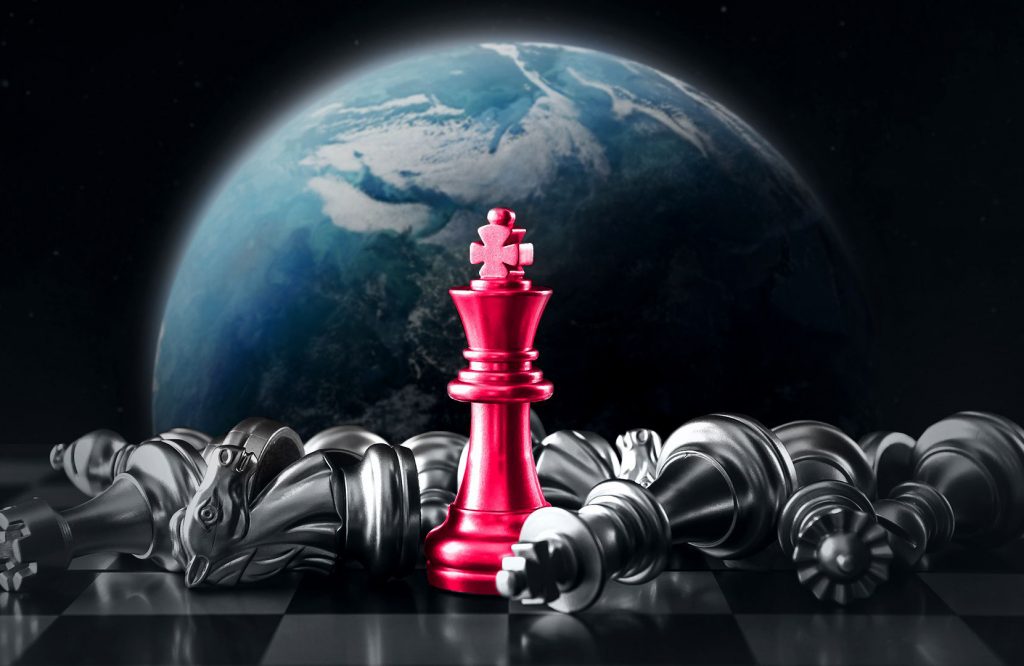
The “real” chess game, then, is not the one we see taking place on the 2D board. It is the 3D chess game that encompasses the 2D game and all the other levels where the deep state(s) are operating. But there’s something else that we haven’t considered yet: what is the goal of these 3D chess masters? How does one win a game of 3D chess?
If we consider each of the conflicts that we have examined thus far (the Cold War, 9/11, the neo-Cold War with China) and many more that we could examine (WWI or WWII or the OKC bombing or big oil environmentalism or the corona crisis or . . . ) as separate “chess matches,” we could work out in each case who the 2D players are, what their goals might be, and how that game is manipulated by 3D players. In some sense, this is the task that I have been engaged in for 14 years here at The Corbett Report.
But to cut to the chase, one would be hard-pressed to state the nature of the 3D game that is being played here any more succinctly than Antony Sutton. When asked to explain why, precisely, the Wall Street interests and other 3D chess players would want to build up the Soviet threat during the Cold War, Sutton stated:
“Why? You won’t find this in the text books. Why is to bring about, I suspect, a plan to control world society in which you and I won’t find the freedoms to believe and think and do as we believe.”
This is it in a nutshell. The wealthy interests do not consider themselves a member of “Team USA” or “Team China” or any of the other two-dimensional constructs that the public has been taught to identify with. Instead, they are wielding their considerable wealth and power to bring about a truly global system of control. That system is not predicated on “Team USA” conquering the chess board, or “Team China” conquering the chess board, or any other final position that we would identify as the end of the two-dimensional chess game. The goal of their 3D game is to control the entire board. Every square. Every piece. All of it. To be able to completely dictate what happens on that board at all times.
Note that if this is indeed the goal of the three-dimensional chess game, then it doesn’t matter if the “white team” ever actually beats the “black team” or vice versa. In fact, it might be in the interest of the 3D chess masters to keep the 2D game going forever, as a way to distract everyone from the fact that the entire 2D board itself has been taken over by unseen players. This is the vision of Nineteen Eighty-Four, for example, where the world is seemingly divided into three super-states (Oceania, Eurasia and Eastasia) that are constantly shifting between permutations of enemy and ally. In the end, not even Outer Party members like Winston Smith know if these enemies really exist, or if they are all part of a single totalitarian government, or if the bombs raining down on Oceania are in fact being dropped by the Oceanian government as a way of keeping its own people in fear.
In chess, the “endgame” refers to the final stage of a chess match, when only a few pieces remain on the board and one player is closing in on a checkmate of his opponent. If the quest for world government is the real goal of these 3D chess players, then is it possible to deny that we are in the end game of this match?
Seemingly every nation in the world has marched in lock-step with the erection of the biosecurity state, showing that once-neglected bodies like the World Health Organization wield—through the International Health Regulations and other treaties carefully laid out over the course of the past few decades—enormous power over the seemingly sovereign governments that subscribe to them.
The World Economic Forum is busy preparing the public via The Great Reset for the coming Fourth Industrial Revolution and the plunge into the transhuman dystopia.
The drive for a global tax grid has just come one step closer to reality thanks to ex-Fed chair and current US Treasury Secretary Janet Yellen.
Surely the drive for truly global control of the human population has never been more eminent or more imminent.
But if we are indeed in the end game for this quest for total control of the grand chessboard, what comes next?
Checkmate?
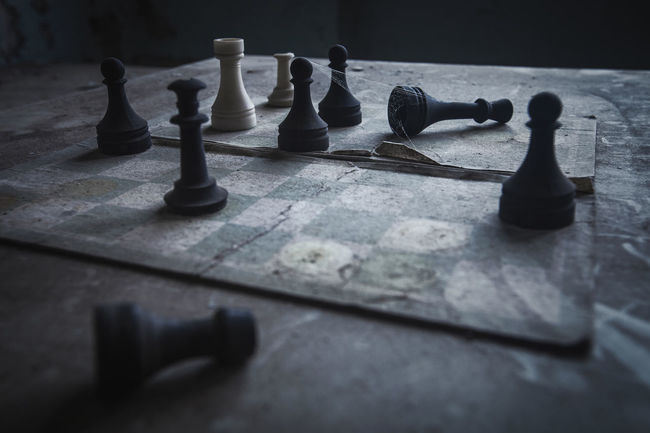
If we extend the 3D chess analogy to its logical conclusion, we finally understand that the real game is not a match between “Team USA” vs. “Team China” or “Team Good Guys” vs. “Team Terrorist” or any other such simplistic, two-dimensional conflict. It is instead a game pitting the largely unseen 3D chess players against the rest of humanity. And, given the technology for altering populations at the genomic level that are coming into view, if we lose this match, we stand to lose our humanity altogether.
In chess, one player “checkmates” the other by driving his opponent’s king into a position from which he cannot move without being attacked. But this is not the only way that a chess match can end. A stalemate or other type of draw can result when neither side is able to successfully checkmate the other. Games can also end when one player, realizing that he cannot escape an eventual checkmate, resigns the match.
But none of these outcomes are acceptable in this game of 3D chess.
A checkmate, representing the victory of one 2D side over another, merely leads to the formation of a new order and the beginning of a new 2D game. If we imagined World War II as a match between “Team Axis” and “Team Allies,” for example, then the victory of Team Allies in 1945 only set the board for a new match. That match, the Cold War, was—as we have already seen—just another 2D contest manipulated and controlled by the 3D forces.
Likewise, a draw is no victory for those interested in actually defeating their 3D opponents. A stalemate on the traditional 2D chess board only prolongs the game, or invites yet another reset of the board. And, as noted above, the 3D players do not care if the 2D game ever finishes. They can gain control of the board regardless of whether the 2D game is still in play or not.
A resignation is obviously not acceptable. We can just give up, eke out what existence we can as the bars of the prison planet close around us, and leave humanity to rot. But if you were inclined to resign, you wouldn’t be here reading these words in the first place.
No, the answer to how to win this 2D chess match against the 3D players is clearly not to be found within the confines and the rules of the 2D chess match at all. In fact, at this point it should be apparent that there is no way to win this rigged, manipulated game at all. The 3D players have an unreasonably fair advantage and, although we can garner glimpses of the 3D team and the pieces at their disposal, a wall of classification and secrecy still shrouds their movements to the point where we can only infer or guess at their abilities to influence the 2D board.
Finally, we are ready to ask the most important question of all: why are we playing this rigged game in the first place? Why are we investing our time, our energy, our resources, our very lives on a rigged game where manipulated teams are playing meaningless contests against fictitious enemies, all the while being manipulated by unseen forces? Why does Joe Sixpack or Sayuri Sumomom or Vladimir Vodkadrinker or Frederico Footballer care what “Team USA” or “Team Japan” or “Team Russia” or “Team Italy” or any of these other 2D chess teams are doing on what we are constantly told is “a grand chessboard?”
What if there is no chessboard? What if there are only people, interacting with each other as they see fit? As human beings. Not engaged in some struggle for control of this or that square of some fictitious playing field, but trying to create a better world for themselves and their family?
What if we removed our participation from the game? What if we started to build our own economy separate from the one that has been erected around us, one in which free human beings interact in voluntary exchange with anyone they want, regardless of what “square” on the chessboard they hail from or what “team” they supposedly “belong” to?
What if we refused to be pawns in the game of the would-be chess masters? The problem of playing 2D chess against the unseen 3D chess masters is solved when we stop playing their silly game at all.
As has been observed before: Sometimes the only winning move is not to play.
To support The Corbett Report and to access the full newsletter, please sign up to become a member of the website.


